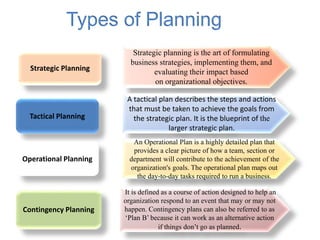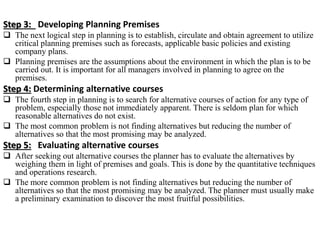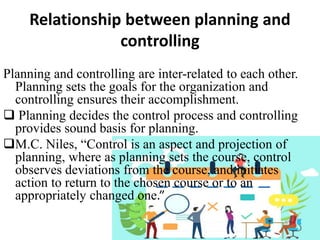Planning is a critical management function that involves deciding in advance what to do and how to achieve organizational goals. It includes several types: strategic, tactical, operational, and contingency planning, each serving specific purposes in achieving targeted objectives. The planning process involves multiple steps, such as establishing objectives, developing premises, evaluating alternatives, and requires coordination across all levels of management to ensure effective execution.









